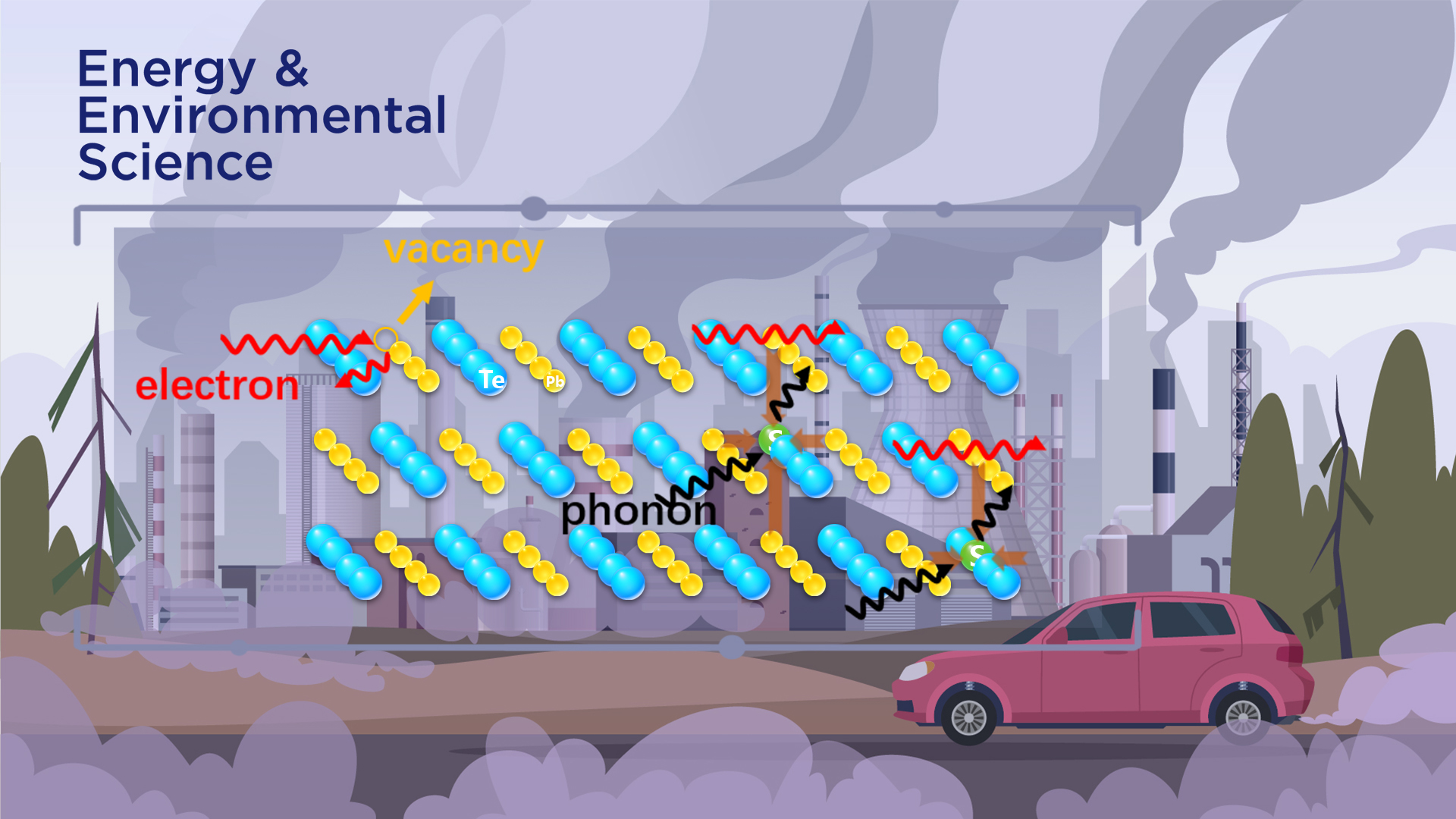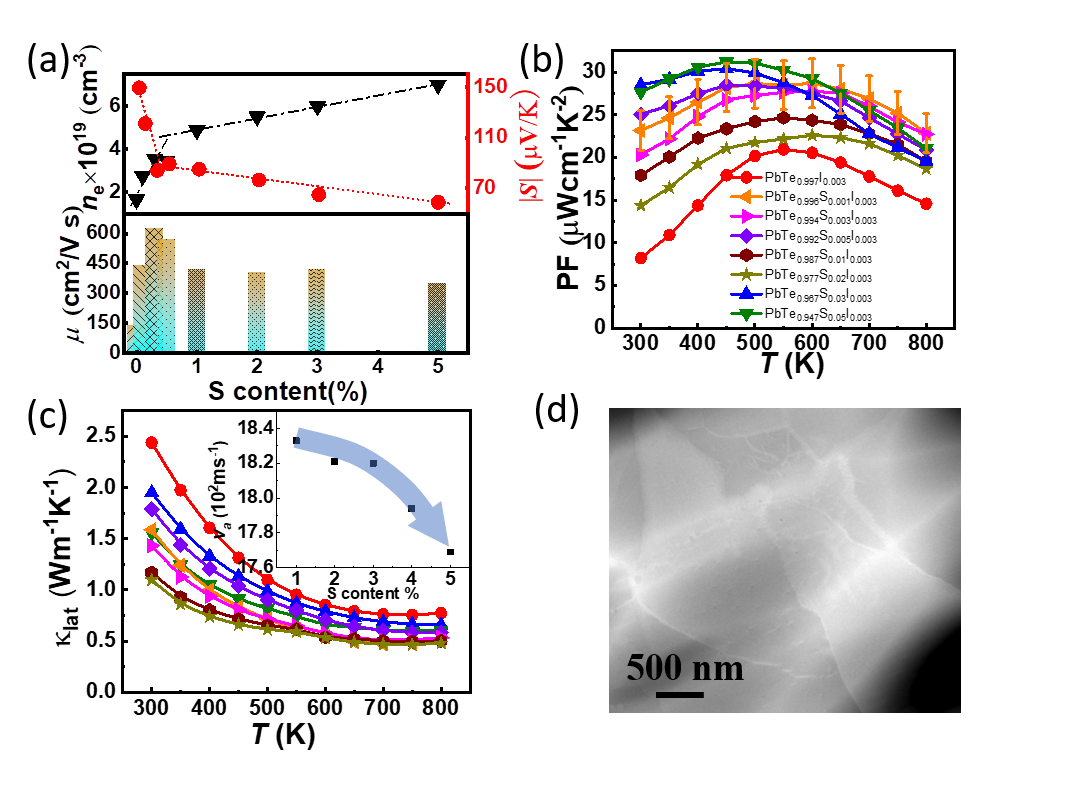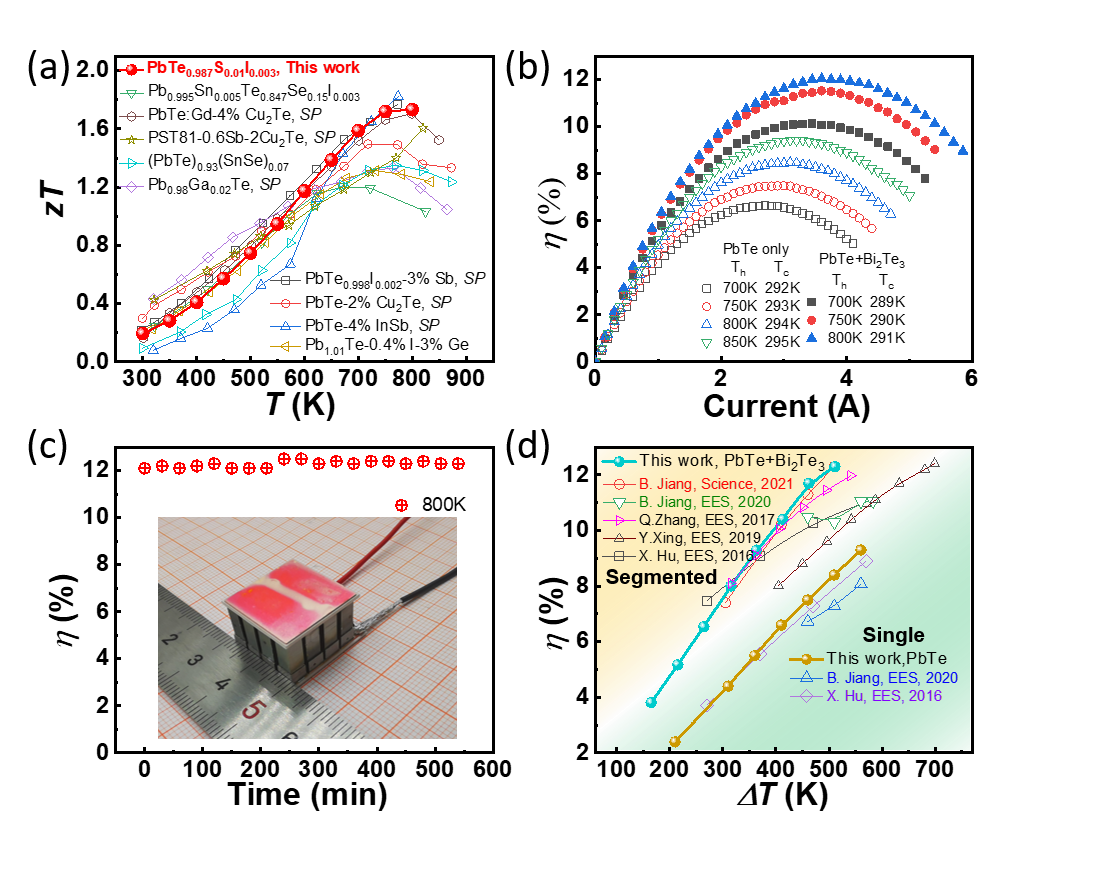Progress in exploration of medium temperature thermoelectric materials and devices
Baohai JIA 2022-04-10
Thermoelectric materials have attracted extensive attention because they can realize the direct conversion between electricity and heat. Of the many excellent thermoelectric materials, PbTe is the only commercially available one in the medium temperature region (600-900 K) due to its record-high performance, good stability, and facile synthesis.
Due to the big differences in electrical, thermal, and mechanical properties in different materials, real applications of the thermoelectric modules should be fabricated with the same material to prevent conversion efficiency degradation and possible cracking from thermal stress. The p-type PbTe, benefiting from the successful implementation of band and defect engineering, has achieved high peak zT values (2.2-2.6). However, most n-type PbTe whose zT values were below 1.7 is much worse than p-type materials. Therefore, the performance of n-type PbTe must be improved to match the excellent properties of p-type PbTe.

Chair Professor Jiaqing He’s team from the Department of Physics at the Southern University of Science and Technology (SUSTech) recently made substantial progress in the research on energy conversion of thermoelectric materials.
Their research, entitled “Realizing High Thermoelectric Performance in Non-nanostructured n-type PbTe,” was published in the high-impact academic journal Energy & Environmental Science.
In this research, Prof. He’s team demonstrated that the thermoelectric performance of n-type PbTe can be largely enhanced by trace S-doping. This confirms the good service stability relative to the widely studied nanostructured materials. The doped S increases the formation energy of Pb vacancies by increasing the bonding energy between anionic and cationic atoms, thus resulting in the elimination of Pb vacancies and a largely increased carrier mobility. The zT value was notably improved to 1.7 at 750 K due to the enhanced electrical transport properties from the increased carrier mobility. This is a comparable high result for n-type PbTe.
 Figure 1. (a) Doping S improves the carrier concentration and mobility of the material; (b) doping S improves the power factor; (c) doping S reduces the lattice thermal conductivity; (d) the material does not contain any nano inclusions.
Figure 1. (a) Doping S improves the carrier concentration and mobility of the material; (b) doping S improves the power factor; (c) doping S reduces the lattice thermal conductivity; (d) the material does not contain any nano inclusions.
Single and segmented PbTe-based thermoelectric modules were fabricated based on the high-performance n-type PbTe in this work, which shows high experimental conversion efficiencies of 9.3 % at 550 K and 12.2 % at 509 K, respectively. More importantly, the fabricated module shows stable output conversion efficiency for 10 h at a hot-side temperature of 800 K, which confirms the good prospects in practical applications.
 Figure 2. (a) The zT value of the research material is at the advanced level; (b) conversion efficiency of single and segmented devices; (c) the picture of the segmented device and conversion efficiency measured at high temperature for a long time; (d) the conversion efficiency of unipolar and segmented devices is at the leading level.
Figure 2. (a) The zT value of the research material is at the advanced level; (b) conversion efficiency of single and segmented devices; (c) the picture of the segmented device and conversion efficiency measured at high temperature for a long time; (d) the conversion efficiency of unipolar and segmented devices is at the leading level.
Baohai Jia, a Ph.D. student from the Department of Physics at SUSTech, is the first author of this paper. Chair Prof. Jiaqing He and Research Associate Professor Binbin Jiang are the corresponding authors.
This work was supported by the National Natural Science Foundation of China (NSFC), the leading talents of the Guangdong Province Program, and the Shenzhen Science and Technology Innovation Commission.
Paper link: https://doi.org/10.1039/D1EE03883D




